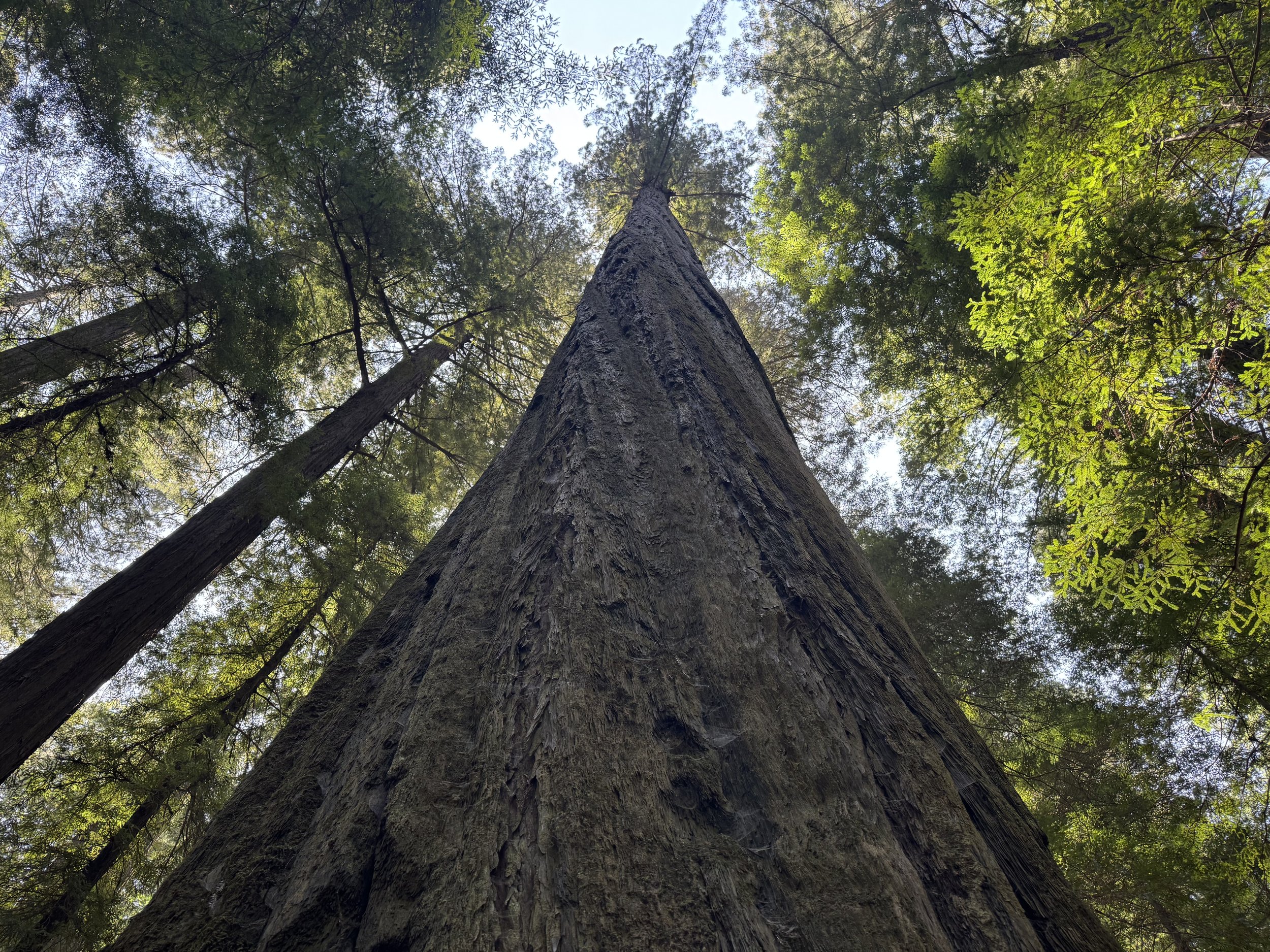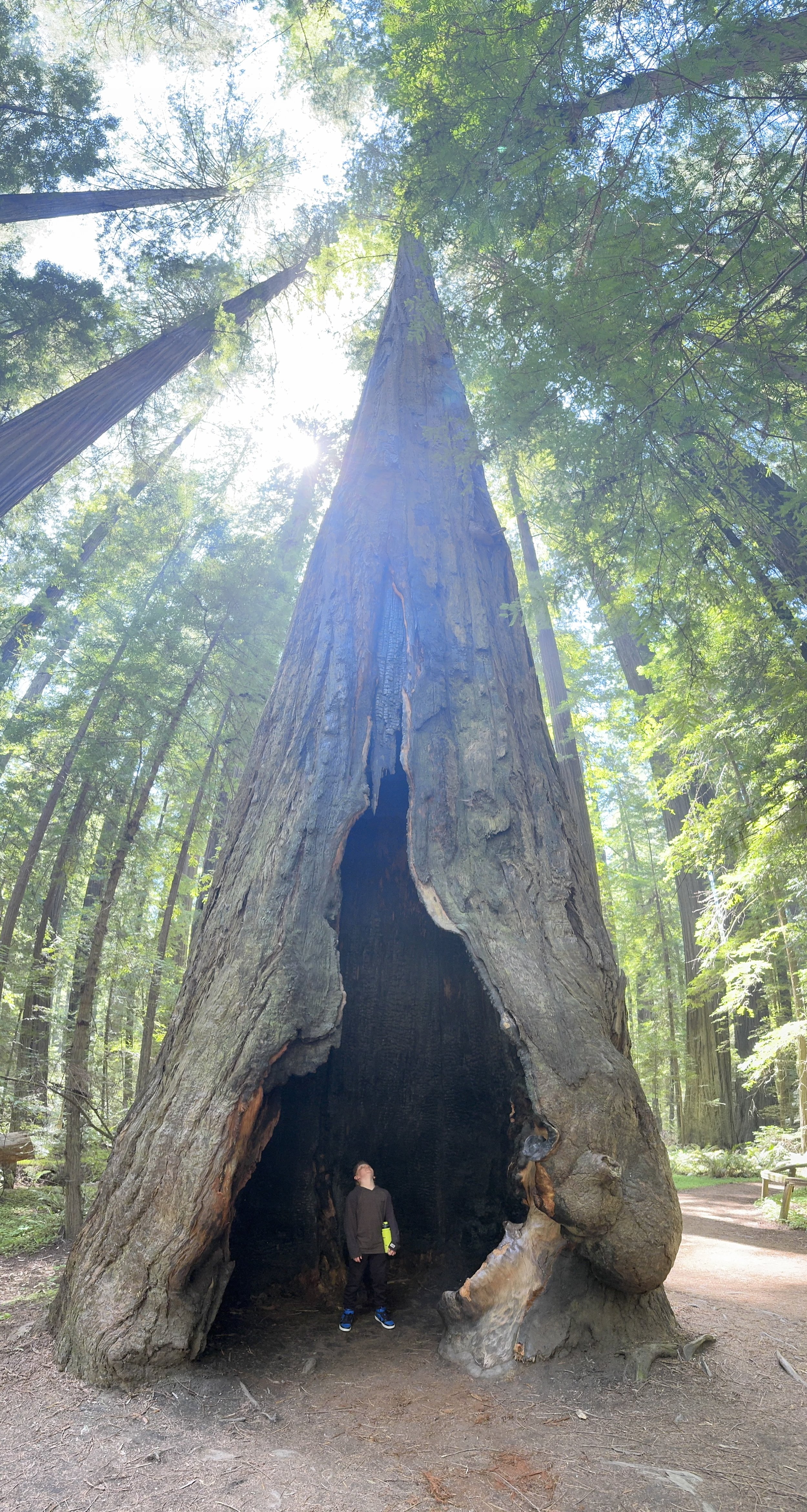6 Fitness Lessons from Redwood Trees
5-min read
I recently got back from a trip up to the Redwood National and State Parks. An incredible place that both makes you feel small and yet connected to something greater. Walking through a Northern California redwood grove is like stepping into a quiet cathedral. These living giants have thrived for millennia, weathering storms, fires, and droughts—yet they continue to reach sky-high.
I couldn’t help but appreciate the towering strength of these incredible beasts and think about what we can learn from them. Like how we can relay their principles of survival and strength into our own fitness routines. Rooting into solid fundamentals, building protection from life’s stresses, and helping us rise—safely and steadily—toward our own towering potential.
There were 6 facts about redwoods I learned that both blew my mind and helped me see some principles of fitness in a different light.
1. Grow From Deep, Wide Roots
A coastal redwood can top 350 feet, but its roots rarely sink more than 10–12 feet into the soil. The secret to its stability is breadth, not depth: lateral roots stretch out 50 yards or more and intertwine with neighboring trees for mutual support.
As with fitness, we want to build a broad base of foundational strength before chasing advanced moves. Prioritize core stability, balanced mobility, and joint integrity. Like a redwood’s interlocking roots, your muscles and connective tissues should work in harmony, distributing load instead of forcing small stabilizer muscles to do all the heavy lifting. Master the fundamentals—hinge, squat, push, pull, rotate, and brace—before layering on complexity or heavy loads.
2. Reach Upward—Progressively
Redwoods don’t sprint skyward overnight; they add a thin growth ring each year. Their whole system slowly adapts to bearing this new weight before reaching even higher. That steady, incremental upward reach is what ultimately breaks height records.
Progression, not aggression, fuels sustainable gains. Follow a structured plan that gradually increases training volume, intensity, or complexity. Small, consistent overload gives your body space to adapt while minimizing injury risk. Even if your muscles feel they can lift more, your tendons and ligaments may need more time to adapt due to the lack of blood flow they receive compared to muscles. Whether you’re adding weight to your deadlift, running farther, or refining pull-up form, think “growth rings,” not leapfrog jumps.
3. Strength in Community
Underground, redwood root systems actually graft to each other, sharing nutrients, and holding each other steady, thus stabilizing entire groves during fierce coastal storms.
Training in isolation can work, but support magnifies success. Find a community—training partners, a class, an online group, or a coach—who share knowledge, spot your lifts, celebrate wins, and keep you accountable on rough days. A solid network buffers stress, boosts motivation, and gives you feedback that a mirror alone can’t provide. And when an unexpected storm hits your daily routine (i.e. work stress, family troubles, or physical injury), you’ve got a community to help keep you stable.
4. Build Your Bark: Protection & Recovery
A mature redwood’s bark can be a foot thick, layered with tannins that resist insects and fire. Even when lightning or wildfire scars the surface, the tree’s core often remains intact and continues to grow. Sometimes, the core of a redwood, down in the trunk, can catch fire or slowly burn if it is exposed from the bark to smoldering embers. When this happens, it can create a giant hole on the base of the tree called a goosepen, but this does not alway end the tree’s life. Since the nutrients of the tree are transferred via the outer edges, the rest of the tree can remain alive and continue to stand tall.
Protective strategies—mobility work, proper warm-ups, sleep, and intelligent recovery—are your bark. Incorporate dynamic movement prep before loading joints, respect cooldowns, and weave in restorative modalities like gentle stretching, breathwork, and soft-tissue care. Adequate sleep and balanced nutrition facilitate tissue repair so you bounce back stronger instead of accumulating hidden damage. And if you do incur an injury, the protective work you’ve done to that point can help keep you strong and resilient as you recover.
5. Adapt With the Seasons
Redwoods sync growth spurts to sunlight cycles and coastal fog. After wildfire, they can sprout new shoots from burls to reclaim lost ground.
Your fitness program should ebb and flow with life’s seasons. Periodize training—build, intensify, then deload—so your nervous system and connective tissues never feel permanently “red-lined.” If work deadlines, lack of sleep, or travel crank up stress, reduce load or shift focus to skill and mobility. Flexibility in programming keeps progress rolling instead of forcing you into the burnout-injury-restart loop.
6. Drink the Fog: Nourish for Resilience
Redwoods draw much of their water from the fog that blankets their canopy; moisture condenses on needles and drips to roots below, sustaining them through dry summers.
Hydration and nutrition are often invisible yet indispensable. Drink consistently—water, electrolyte-rich fluids, and nutrient-dense foods—to keep joints lubricated, muscles firing, and cognitive focus sharp. Think of each sip and balanced meal as “fog drip” that feeds your internal ecosystem, allowing hard training to translate into real adaptation.
Putting It All Together
A redwood’s grandeur is really the sum of patient, purposeful habits repeated over centuries. Your own fitness might play out over decades, but the blueprint is the same:
Lay a stable foundation of functional strength and mobility.
Progress methodically, honoring small wins.
Lean on community for shared strength and accountability.
Protect your structure with recovery, sleep, and smart load management.
Adapt your plan to life’s rhythms rather than fighting them.
Fuel and hydrate so that every training stimulus can take root.
When you commit to these principles, you create a body and mind that don’t just perform—they endure. Like the redwoods, you’ll stand tall against daily stressors, recover from inevitable setbacks, and keep reaching upward long after quick-fix programs have toppled.
So next time you lace up your shoes or grip a barbell, picture that ancient grove: roots locked together, trunks unwavering, crowns brushing the clouds. Let it remind you that greatness isn’t hurried—it’s cultivated. Start laying your growth rings today, and decades from now you’ll thank yourself for planting the seed.
Ready to deepen your roots?
Reach out for a personalized training plan built to help you rise—steadily, safely, and spectacularly.




